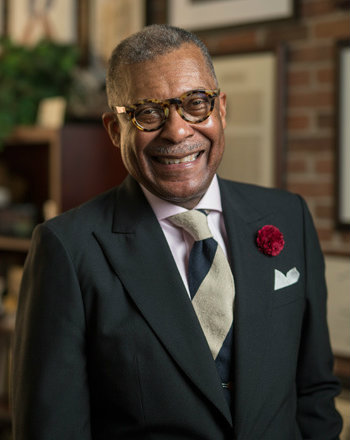“Living up to our true mission:” A conversation with Dr. André Churchwell on the history of diversity work at Vanderbilt
by Emma Mattson
 In the forty years since Dr. André Churchwell graduated from medical school, his contributions to diversity and inclusion work have changed the face of U.S. medical education.
In the forty years since Dr. André Churchwell graduated from medical school, his contributions to diversity and inclusion work have changed the face of U.S. medical education.
Since last July, Churchwell has served as the interim vice chancellor for equity, diversity and inclusion and the chief diversity officer for Vanderbilt University. On May 27, the university announced that he had been appointed to continue these roles in a permanent position.
In addition, this July marks Dr. André Churchwell’s fourth year as Chief Diversity Officer for Vanderbilt University Medical Center. As VUSM Senior Associate Dean for Diversity Affairs, he also oversees all Vanderbilt academic medical diversity initiatives.
We sat down (virtually) with Dean Churchwell to talk about the history of diversity and inclusion at Vanderbilt and his hopes for the future.
Q: You’ve been part of the Vanderbilt community for almost thirty years. How have you seen diversity and inclusion work change over the decades that you’ve been involved in medical education?
Dean Churchwell: If you think about diversity and inclusion in the context of the medical school, you have to go back to 1968. 1968 was a tumultuous year: the Vietnam War was going on, and there were assassinations of two really key people who were heroes of social justice. One was Robert F. Kennedy, Jr.; the other was Martin Luther King, Jr. On the heels of their assassinations, a lot of liberal thought leaders around the country, mostly at large universities, really began to have one voice around the fact that our schools—our high schools and our colleges, med schools, dental schools, and law schools—were graduating students that did not in any way reflect the changing demographics of the American population.
The diversity being graduated in med schools was ninety-plus percent just from either Meharry or Howard Medical Schools. There was little diversity occurring in the predominantly white institutions. So these great voices—many of them have gone on to win great awards—really got the pulse and called out for social justice and touched a sensitive area that was (thank goodness) ripe for being stimulated.
You began seeing a lot of schools, Vanderbilt included, begin to open their doors—the university doors and the med school doors. Some opened faster than others, some were slower, but eventually it began to happen. It was aided and assisted by a legal construct at the time that was called Affirmative Action. Affirmative Action was a legal construct from the Supreme Court that put the onus on our education to begin to open their doors and not discriminate against people on the basis of race or sex or ethnicity.
So the initial years and thrust of what we called at that time “integrating” our medical schools were around a legal construct. At the time, there was not enough of a wellspring of understanding, research experience, or social studies to recognize that, in fact, by integrating those med schools and colleges with people from different backgrounds than the majority of students that were in those schools, latently the learning environment would be turned into a much richer experience for everybody.
Q: How have you seen diversity and inclusion work grow in importance here at Vanderbilt?
Dean Churchwell: The first real work on diversifying our med school experiences was almost entirely devoted to diversifying the entering med school classes. That took an enormous amount of work to help our admission committees around the country understand, once again, the power and value of that diverse learning environment where everyone learns from each other. We learn from our family experiences, our personal experiences. We understand the cultural issues that patients from those marginalized roots face, because we are from those marginalized roots.
As I’ve sat in that role for over 30 years, we have now watched the evolution and growth of this from not just being tokenism to being a true commitment to diversity and now a true commitment to inclusion—and a recognition along the way that we had to now embrace education equity and health equity to really live up to our true mission in medical school.
Q: How does this emphasis on diversity, inclusion, and health equity translate to VUMC?
Dean Churchwell: Once again, building that sense of community and valuing everyone who works here for the last four years, we’ve been having portrait hangings of people other than the usual portrait hangings of mostly white men. Nothing wrong with honoring in the past all of our great scientists and clinicians who are all white men, but we left out the fact that there have been some African Americans, some women, some LGBTQ individuals, and the whole panoply of people who worked here from different groups. We’ve also been having Hidden Figures awards for VUMC staff. Some have passed away and never got their true due, but because of their work here, they helped make the medical center grow.
Over the past 5 years, we’ve trained almost over 5,000 faculty, staff, and students in unconscious bias training. You can’t deliver on the power of a diverse student group or a diverse faculty or a diverse anything or workforce, if you don’t have inclusive practices in place. And one of the big ones is dealing with unconscious bias, so we’ve been working on that.
[Lasting change] doesn’t happen until diversity and inclusion become not a stand-alone, but a strategic directive. The more strategic directives, the more of those things become inculcated as part of the culture. That is what I think is occurring or is happening here at Vanderbilt. It’s becoming part of our culture.
Content has been edited for clarity and length.